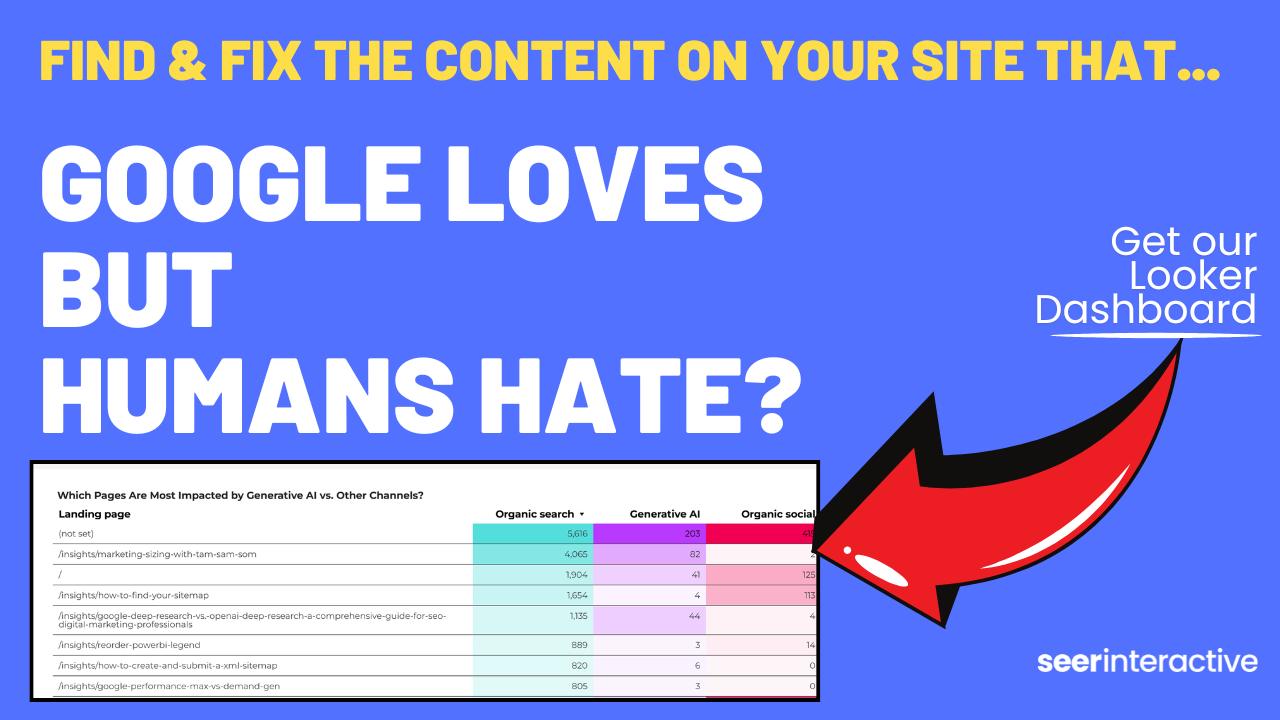I recently wrote about the agency problem of having so many great ideas across team members but having inconsistent deployment of those ideas.
Now I want to walk you through an example of what these ideas can look like depending on the maturity of your team, processes, and resources.
The example we'll walk through is updating title tags by seeing how many of a clients’ website pages have “2022” in the page title as we head into 2023.
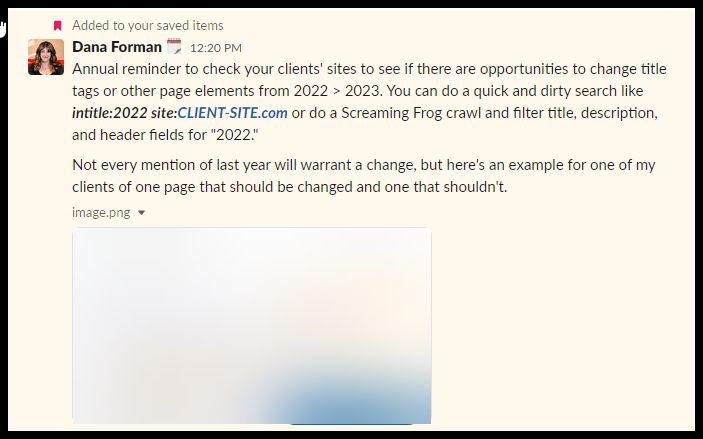
Strategy From SEO 101 to 301
If you want to do this yourself, admittedly, this is a pretty low level strategy. I’m writing up all my hypotheses as I dig for value and look for feedback from my team.
SEO Strategy 101
- Find your site (or a competitor’s site) and pull all page titles with “2022” in the title
- Do this using from widely available tools (Ahrefs, Semrush)
- I spent five minutes looking for titles in SEMrush and didn’t find them. (Please let me know if there’s an export with them.)
Instead, I used ahrefs, which also gives you the author. (And yes, you can export into CSV, allowing you to run it pretty quickly on your domain and maybe 10 or so others.
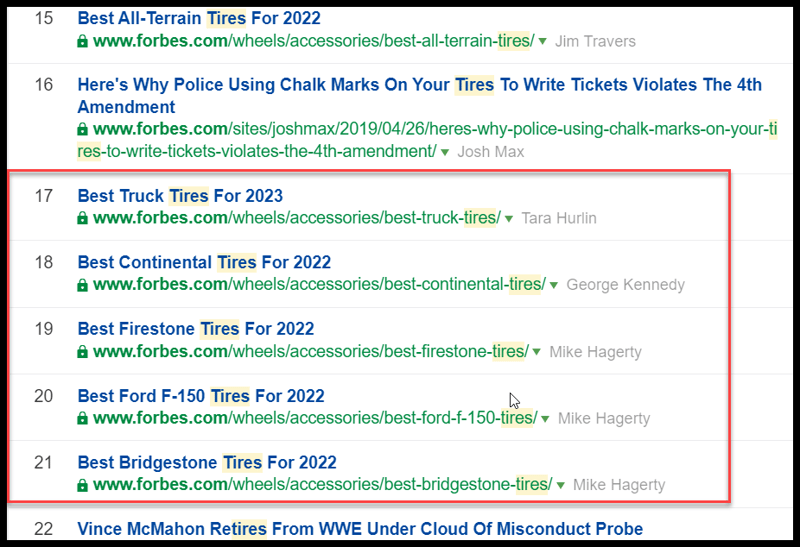
If you wanted to keep this running for some reason. I can imagine you’d have to use the integration with supermetrics to save you time.
- From there, take your top 5-10-20-30 competitors and pull the data from ahrefs. Obviously, you can use Looker Studio, Tableau, or your analytical program of choice. I’ll show you how to use Power BI.
Now you can say: “Hey, client! We’ve found posts titled with “2021” that are ranking for Y keywords with Z monthly search volume.” If you really saw value here, you could also show your client their top 10 competitors who haven’t updated their dates.
SEO Strategy 201
Next, join the paid data (Search terms, Clicks, Costs, Conversions) with your SEO data (Keyword, URL, Ranking Position, Competitor domain, etc). Join on the search term.
[TIP] Not sure how to do it? No problem! This tutorial will have you up and running in less than 6-minutes.
Now that you can combine your PPC & SEO data at the search term level, just make sure you export the titles so you can filter by titles with “2001,” “2002,” etc.
Here’s the big difference in what you can tell your clients you’ve found after running this process:
Biz case before combining data:
Hey, client! We’ve found 30 posts from your competitors with “2021” in the title that are ranking for 560 keywords in the top 10 with 10,000 monthly searches.
Biz case after:
Hey, client! We’ve found 30 posts from your competitors with “2021” in the title that are ranking for 560 keywords in the top 10 with 10,000 monthly searches. AND you see enough value in these words to spend $5,670 annually, and on those terms you got 55 leads / conversions. That is why I think we should / should not execute on this strategy.
The rub:
At Seer, we love combining PPC and SEO data for these insights, but doing it in Power BI each time required a lot of work for team members.
So, now we run it for all clients at once and the data updates weekly or monthly. Each month, we automatically see which competitors are updating titles and more.
This holds us accountable for executing on our promises and allows us to keep an eye on how long we can take advantage of an opportunity (for instance, are our competitors starting to update their data?).
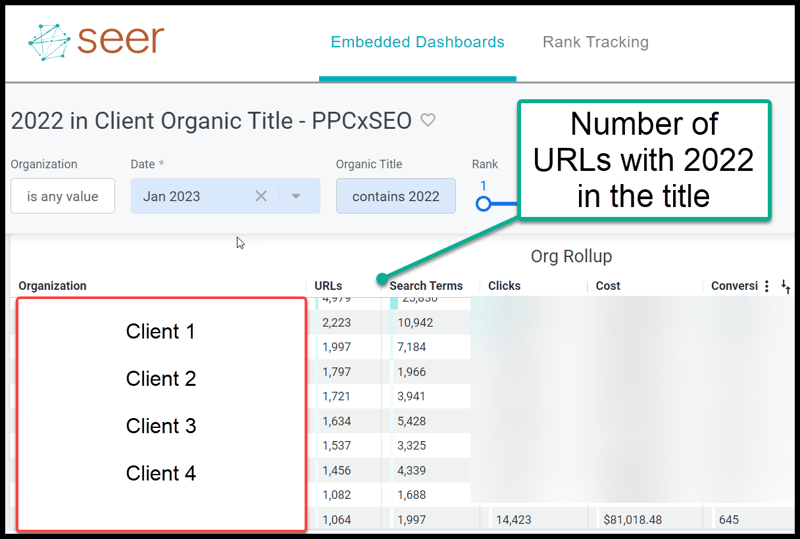
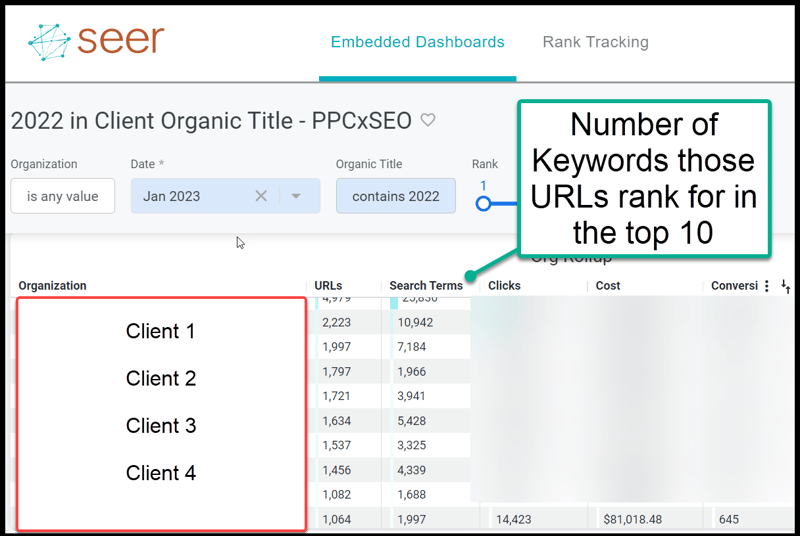
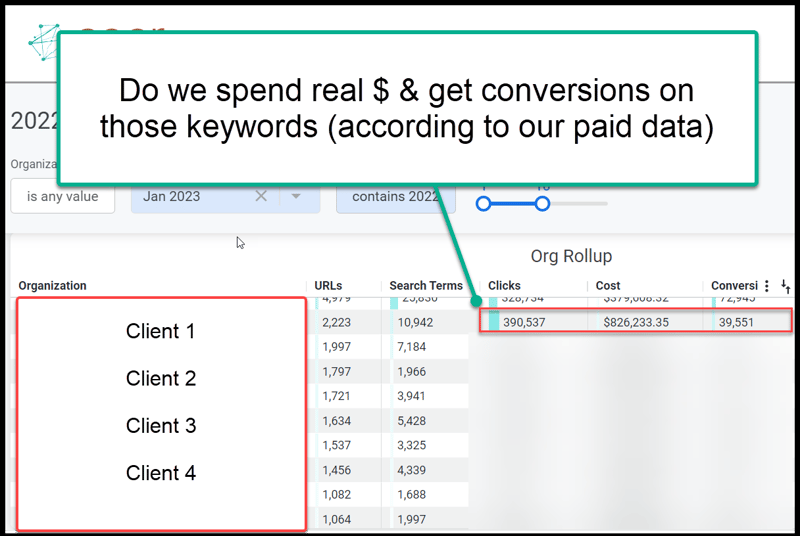
SEO Strategy 301: Finding opportunities in 3 minutes
With our big data platform in place, now I can say to my client: “Hey, four of your competitors have updated their content for “2023” around this cohort of keywords in your “headphones review” page. Last year we spent $826,233 on those terms and got 40,000 conversions. I think it’s worth us spending one hour to update your “2022” post with a “2023” image and our predictions for the technologies that will make all headphones better in 2022.
When you have your data at scale and democratized, arriving at this insight takes maybe three minutes of your time and 5 to 8 clicks to surface. Now, we can scale this idea and lead to small, insightful, proactive conversations.
Be Smart
Y'all know what content is evergreen and what content is not. Don't be that person that does a find and replace. Do the work. Google isn't going to uplift non-evergreen pages. They're smarter than that and so are you.
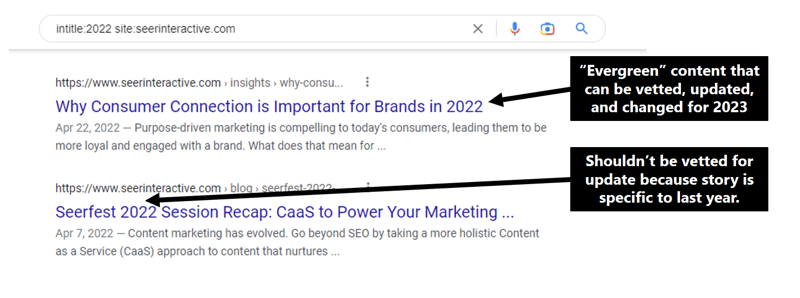
Commit the time
Going through either of these processes takes time. I hate when a really smart search strategy comes down the pike, but it might take too much time to pull the data in some tool, run Screaming Frog, etc – only to find out there’s not a lot of value for your client.
That wastes my team’s time and diverts their focus from other higher value activities.
This is why I can’t wait to integrate Looker with Slack. We can just alert teams when a piece of criteria is met.

Want more posts like this? Subscribe to the Seer Newsletter:


